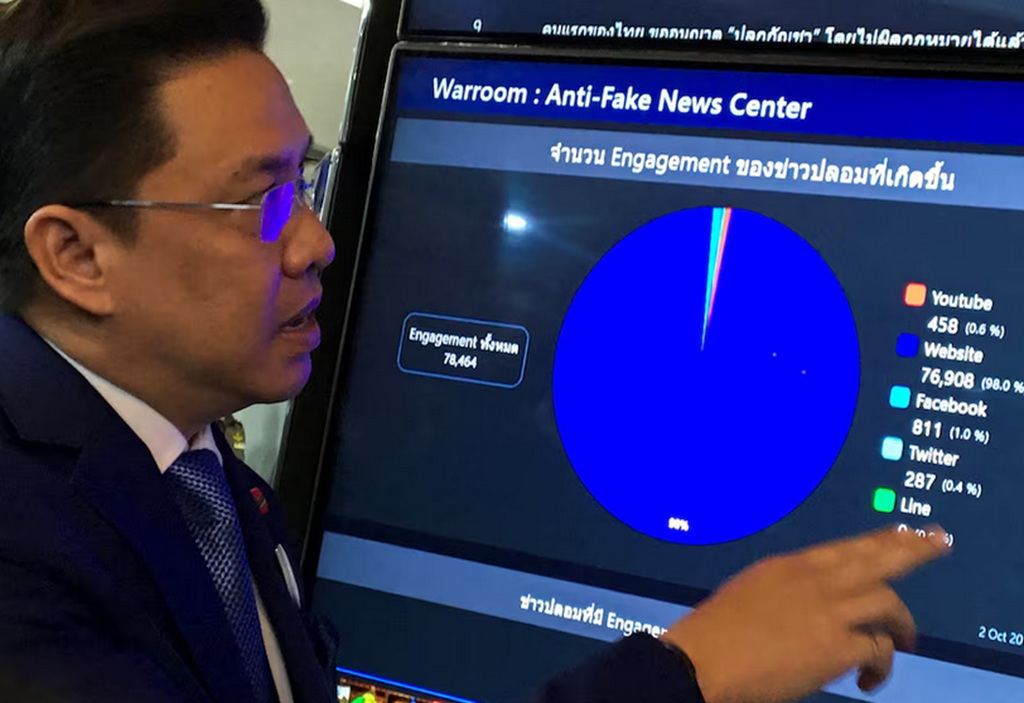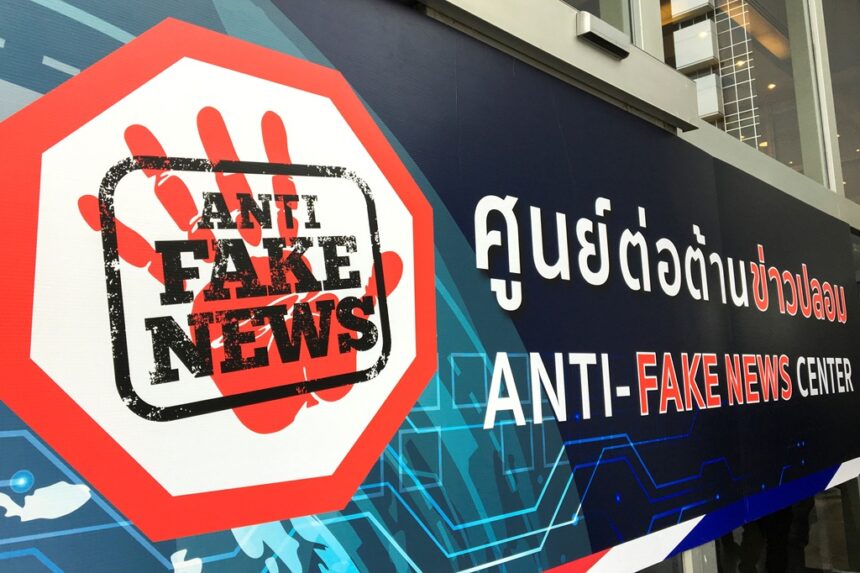The Ministry of Digital Economy and Society has announced its collaboration with over 300 organizations to combat fake news. It is also planning to incorporate artificial intelligence (AI) to help verify news more effectively.
Minister Prasert Jantararuangtong spoke at a workshop held at the Centara Life Government Complex Hotel in Bangkok. The event focused on improving coordination to fact-check misinformation and strengthening partnerships to tackle false reports.
The Anti-Fake News Center, established in November 2019, aims to address the spread of false information, especially relating to online scams, and prevent the public from becoming victims. The centre works alongside a network of public and private organizations, civil society groups, and media outlets to verify and share accurate information.

Fake news is categorized into five key groups impacting the public:
- Government policies and national security
- Illegal goods and services
- Economic issues
- Natural disasters
- Online crime
The Anti-Fake News Center provides updates through its website, which has nearly 28 million views, and its Line account, followed by 2.8 million users. It also maintains a presence on Facebook, X, TikTok, and Instagram.
Since December 2022, the ministry has teamed up with the government’s Pao Tang app to send alerts about online scams and misinformation. On average, 23.5 million alerts were sent monthly last year.
The ministry has also partnered with 16 Thai banks and media networks to raise awareness about fake news. Additionally, it signed an agreement with the Thai Media Fund, a public organization promoting media literacy, to ensure people have access to reliable information.
Minister Prasert emphasized the need for collaboration with partners to quickly share accurate info with the public. Plans are also underway to integrate AI for verifying news. This is expected to better detect and label content as fake, misleading, or accurate, helping reduce losses from online scams.
“Using AI will allow us to efficiently identify false information and protect people from scams carried out through social media,” he said.
Fake News and Misinformation
Statista reports that fake news is becoming its own industry, with people being paid to write sensational stories and create clickbait to drive web traffic. Misinformation (misleading information presented as fact) and disinformation (deliberately false information) are often designed to appear credible. They can spread to thousands of users in just minutes.
Social media plays a huge role in the spread of false news. Despite being the least trusted news source worldwide since 2016, a study found that over half of internet users in 23 countries use social platforms to stay informed.
Younger audiences are particularly vulnerable to fake news because they spend more time on social media than older generations. This issue became even more apparent during the coronavirus pandemic.
There’s no easy solution to fighting false news, but raising awareness and building skills to spot misinformation are essential for anyone who consumes news. By reporting suspicious posts, relying on trusted sources, and fact-checking information, individuals can take small but meaningful steps toward creating a safer space for news sharing.
Related News:
VCI Global Partners to Deliver Next-Level AI Cybersecurity Technology

Geoff Thomas is an award winning journalist known for his sharp insights and no-nonsense reporting style. Over the years he has worked for Reuters and the Canadian Press covering everything from political scandals to human interest stories. He brings a clear and direct approach to his work.














